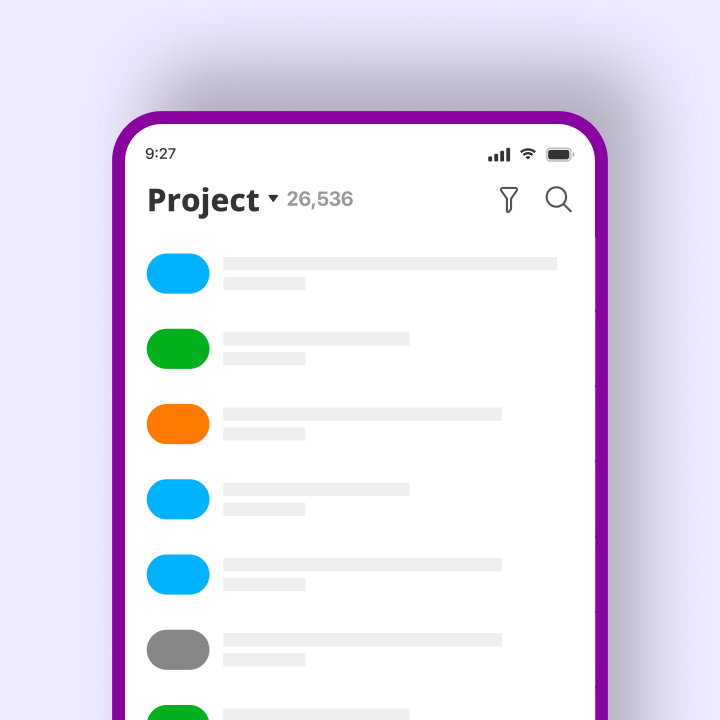Starting a software project can be daunting, but a well-organized plan is essential for success. Simple roadmaps, charts, and templates can help streamline the process, allowing the team to concentrate on their tasks. Both startups and established companies thrive when everyone is aligned, making early coordination crucial.
A pre-made planning sheet helps set agile goals, assign tasks, and monitor progress. Avoiding common pitfalls protects your budget and deadlines, which is always a relief on release day. Let’s explore how to create an effective software development plan.
What Is a Software Development Project Plan?
A software development project plan outlines the steps needed to transform an idea into a functional product. This document establishes goals, timelines, and resource allocation, ensuring everyone understands the project’s objectives. Teams that follow a clear plan are less likely to encounter unexpected challenges or deadline stress, as the plan helps maintain order.
Key Terms: Software Project Plan vs. Application Development Plan
People often confuse software project plans with application development plans, but they serve different purposes. A software project plan covers the entire lifecycle of design, coding, and testing, while an application development plan focuses on a specific app and typically adheres to a tighter schedule. Both require careful planning and estimation to avoid budget overruns and scope creep.
A solid project management guide goes beyond task lists. It defines communication channels, assesses risks, and establishes quality standards. Neglecting this preparation can lead to delays, messy code, and wasted resources. A comprehensive checklist, board, or spreadsheet provides milestones for the team to pursue and keeps the project on track.
Why Planning Is Critical in Software Projects?
A well-structured software development plan is vital for any successful technology initiative. It enables teams to deliver quality products on time and within budget. A clear project plan also enhances predictability and efficiency throughout the development process.
Essential Components of a Software Development Plan
To ensure clarity, efficiency, and accountability throughout a project’s lifecycle, a well-organized software development project plan is essential. Whether you’re working on a small application or a large system, breaking down key components is crucial. Here are the essential elements of an effective software development plan that helps teams stay aligned and produce high-quality results:
Project Scope and Objectives
Clearly defining goals and boundaries is the foundation of any successful software project plan. The scope document should outline deliverables and specify what is not included, while objectives must establish measurable success criteria. Without a well-defined scope, projects often face shifting requirements, missed deadlines, and budget issues.
Team Roles and Responsibilities
A solid application development project plan identifies all key team members upfront, including back-end developers, QA testers, product owners, and Scrum Masters. Clearly defining roles helps prevent overlap and ensures everyone knows their responsibilities during the often chaotic sprint process.
Timeline and Milestones
Every professional software development plan requires a detailed, realistic schedule with clearly defined milestones for sprints, feature completions, and testing phases. This structured approach allows for accurate progress tracking and provides stakeholders with regular updates on the project’s status.
Project Methodology and Tools
Choosing the right development methodology (Agile, Waterfall, or hybrid) and supporting tools is a critical aspect of any software project plan. The selected methodology should align with project requirements, while tools must effectively support version control, task management, and continuous integration.
Risk Management and Contingencies
A comprehensive software development plan proactively identifies potential risks, such as technical debt, resource shortages, and timeline delays. It should also outline specific mitigation strategies and backup plans to keep the project on track despite challenges.
Communication Plan
Effective projects include a communication plan that outlines meeting schedules, status updates, and escalation procedures. This blueprint minimizes confusion, keeps everyone informed, and ensures that no important voices are overlooked.
Testing and Quality Assurance
A comprehensive software development project plan must include thorough quality assurance processes at every stage of the lifecycle. The plan should outline the scheduling of different testing types, such as unit, integration, and performance testing, at suitable intervals to identify defects early when they are most manageable to address.
Deployment and Maintenance Strategy
The final phase of a comprehensive software development plan addresses not only initial deployment but also ongoing support. It should cover rollout procedures, user training, monitoring systems, and scheduled maintenance to ensure long-term operational stability.
Step-by-Step Guide to Creating a Software Project Plan
Creating an effective software development project plan requires careful planning and attention to detail. Whether you’re using a template or building a plan from scratch, following a structured approach ensures nothing is overlooked. This step-by-step guide will help you create a comprehensive software development plan that aligns stakeholders, optimizes resources, and sets your project up for success:
- Define the Project Scope
Start by clearly defining what you are building and what is not included. Document functional requirements, user stories, and success criteria while establishing boundaries to prevent scope creep. A well-defined scope ensures everyone understands the project’s objectives and deliverables from the outset.
- Break Down Tasks and Phases
Transform your software development plan into actionable steps by breaking the project into manageable phases and tasks. Use work breakdown structures to identify dependencies between components. This detailed approach makes complex projects more manageable and allows for clearer progress tracking.
- Assign Resources and Set Deadlines
Your software development plan should clearly assign team members to specific tasks and establish realistic timelines. Consider skill sets, availability, and potential bottlenecks when allocating resources. The project plan must balance ambitious yet achievable deadlines to maintain momentum without overwhelming your team.
- Identify Risks and Create Mitigation Plans
Proactive risk management sets a robust software development plan apart from a basic timeline. Identify potential technical, resource, and scheduling risks, and document contingency strategies. Incorporating these into your project plan prepares you for challenges that may arise.
- Document Tools and Processes
Specify in your software project plan which methodologies (Agile, Scrum), version control systems, project management tools, and communication platforms your team will use. Standardizing these elements prevents confusion and maintains consistency throughout the development lifecycle.
- Create a QA and Testing Timeline
A complete software development plan integrates quality assurance throughout the process, not just at the end. Schedule test cycles, define acceptance criteria, and allocate time for bug fixes. Treat QA as a parallel track rather than a final phase in your project plan.
- Plan for Post-Launch Maintenance
The best software project plans extend beyond initial deployment. Document processes for monitoring, patches, updates, and user support. This forward-thinking approach ensures long-term success and user satisfaction.
Software Development Plan Templates & Examples
(제공해주시는 자료에 맞게 수정 , 미 제공시 해당 영역 삭제)
Well-crafted templates can simplify the creation of your software development project plan while ensuring consistency. Whether you’re managing enterprise systems or mobile applications, these templates save time and uphold best practices. Here are three essential templates tailored to meet various planning needs for teams of all sizes and methodologies:
Editable Project Plan Template
This adaptable software development planner features task breakdowns, resource allocation, and milestone tracking. The spreadsheet format allows for easy sorting and visualization of critical path items. Built-in formulas assist in calculating timelines, and cloud-sharing capabilities enhance team collaboration on your project plan.
Application Development Timeline (Gantt Example)
This visual template illustrates your software development plan with task durations, dependencies, and milestones. Color coding helps identify bottlenecks and resource conflicts, transforming complex project schedules into clear formats suitable for both short sprints and long-term roadmaps.
Agile Sprint Planning Sample
Designed for Agile teams, this software development planner emphasizes sprint backlogs, user stories, and velocity tracking. It includes burn-down charts and retrospective sections, enabling teams to adapt effectively to changing project requirements.
Common Mistakes in Software Development Planning
Even with the best intentions, teams can encounter challenges when creating their software development plan. These common pitfalls can derail even the most structured initiatives. Being aware of these mistakes can help keep your project on track and ensure quality results:
Ignoring Buffer Time
Many project planners underestimate the importance of contingency time. Unexpected delays in development, testing, or approvals can create a domino effect without proper buffers. A realistic plan should include an additional 15-20% of time to accommodate unforeseen challenges.
Lack of Stakeholder Alignment
Creating a software development project plan in isolation often leads to missing key requirements. Failing to involve all stakeholders early can result in misaligned expectations and unnecessary rework. Regular check-ins help keep everyone aligned throughout the execution of the plan.
Overlooking QA and Maintenance Phases
Some teams treat quality assurance (QA) and maintenance as afterthoughts in their software development plan, leading to technical debt and post-launch issues. A thorough plan allocates adequate resources for testing and ongoing support.
FAQs About Software Project Planning
What should be included in a software project plan?
A comprehensive software project plan should encompass scope, timelines, resources, risk management, QA processes, and stakeholder communication strategies. It must clearly define deliverables, milestones, and success metrics to keep teams aligned.
How do I track progress in a development plan?
Utilize tools like Jira or Trello to monitor task completion against your software development plan timeline. Regular stand-ups and sprint reviews help assess progress, while burn-down charts visualize remaining work.
Is Agile or Waterfall better for software planning?
Agile is ideal for dynamic projects that require flexibility, while Waterfall is suited for well-defined requirements. Choose based on project complexity; many teams successfully blend both approaches in their software development project plans.
Streamline Your Software Development Planning with Morningmate
Are you tired of managing spreadsheets, missing deadlines, and enduring endless status meetings for your software development project plan? Morningmate transforms chaotic planning into a streamlined process, enabling you to create better project plans with less stress and more effective results.
With Morningmate, you gain:
- Visual project timelines that clarify your software development plan for everyone
- Intelligent progress tracking that adapts to Agile, Waterfall, or hybrid methodologies
- Centralized collaboration for requirements, feedback, and approvals in one location
- Automated reporting, ensuring stakeholders receive real-time status updates
Eliminate the chaos from your software planning. Try MorningMate’s free trial today and discover how easy it can be to execute your software development project plan with precision and confidence.




